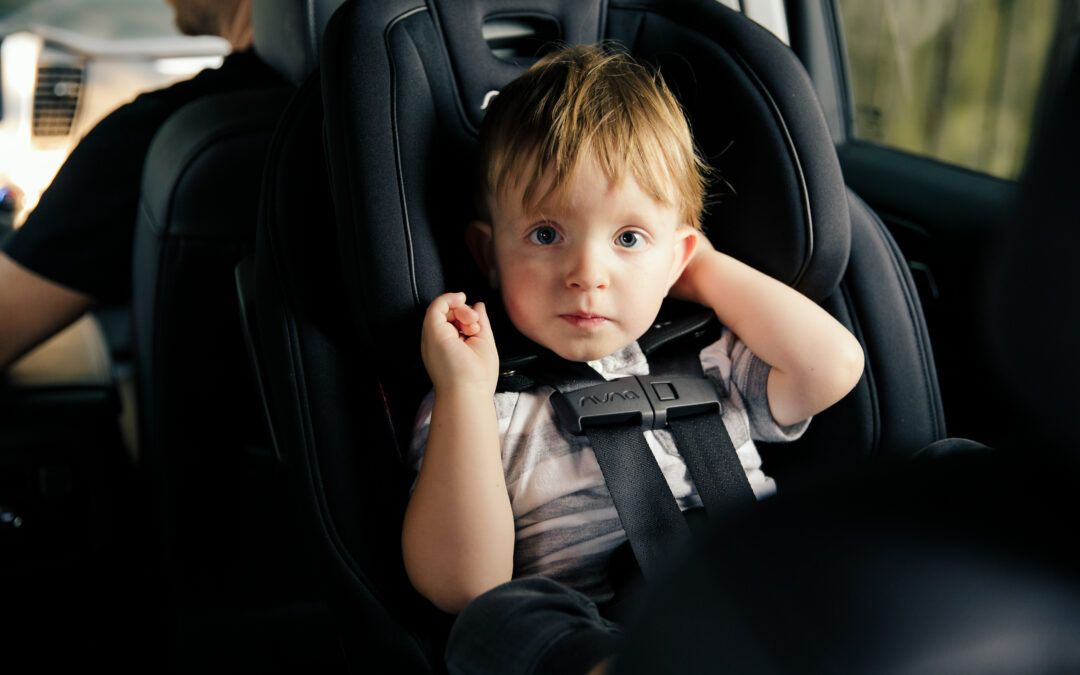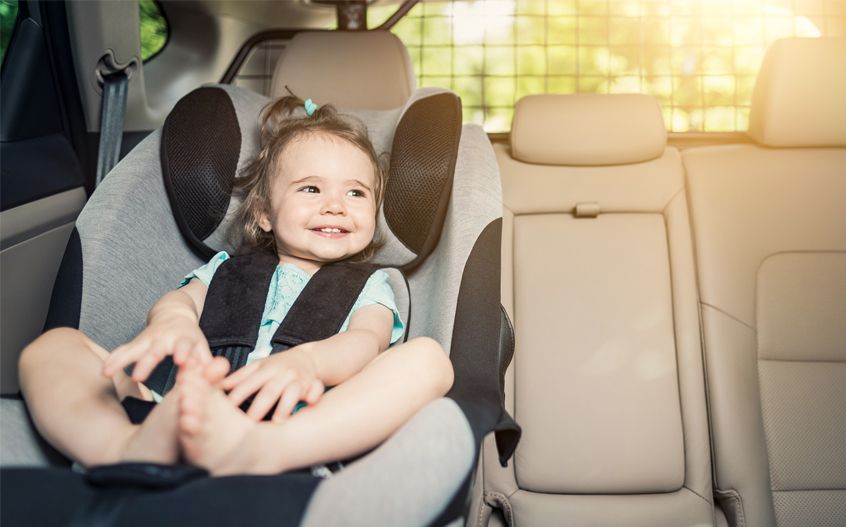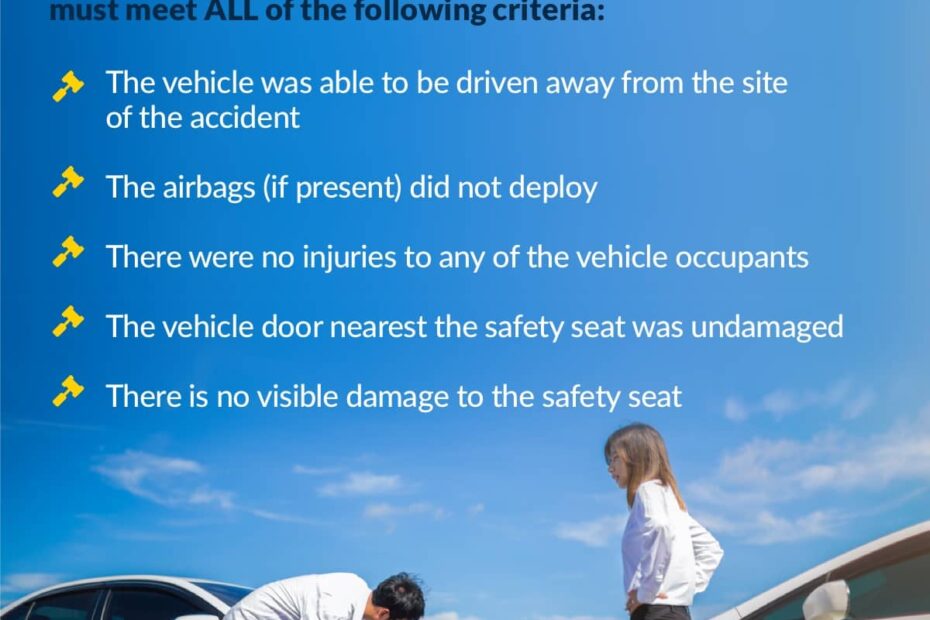Your car insurance may cover car seat replacement after an accident, but this depends on the laws in your state and the specific details of your policy. If the car seat was occupied at the time of the crash, it is more likely to be covered.
However, insurance companies may deny a claim if the car seat was unoccupied during the accident. It’s important to review your policy and consult with your insurance provider to understand the coverage and requirements for car seat replacement in the event of an accident.

Credit: saferide4kids.com
Why Should Car Seats Be Replaced?
After an accident, car seats should be replaced to ensure the safety of passengers. While insurance coverage for car seat replacement depends on the laws in your state and the specific details of the accident, many insurance companies do provide coverage for car seat replacement.
Exploring The Impact Of Accidents On Car Seats
Car accidents can be incredibly stressful and can cause damage not only to your vehicle but also to your car seat. It is important to understand the impact of accidents on car seats to ensure the safety of your child. Even if the damage to the car seat is not visible, it may still compromise its effectiveness in protecting your child in the event of another accident. This is why it is crucial to assess the condition of your car seat after an accident and consider replacing it if necessary.
Understanding The Risks Of Using A Damaged Car Seat
Using a damaged car seat can pose significant risks to your child’s safety. The force of impact during a car accident can cause hidden damages to the structure of the car seat, such as cracks or weakened components. These damages may not be immediately visible to the naked eye but can have a serious impact on the seat’s ability to protect your child in subsequent accidents.
- Reduced protection: A damaged car seat may not be able to withstand the force of impact in a future accident, potentially leading to more severe injuries for your child.
- Unstable positioning: Cracks or damage to the seat’s anchoring points can compromise its stability and increase the risk of improper positioning or detachment during an accident.
- Lack of proper restraint: Damages to the harness or buckle of the car seat can decrease its ability to properly secure your child, putting them at a higher risk of ejection or injury.
It is vital to prioritize your child’s safety by ensuring that their car seat is in optimal condition and not compromised by a previous accident. This can help provide peace of mind and significantly reduce the risk of injuries in future car accidents.
Insurance Coverage
Car seat replacement after an accident may be covered by insurance, depending on the laws in your state and the specific details of the accident. It’s recommended to consult with your auto insurance company to understand their policies and procedures regarding car seat replacement.
Examining If Insurance Policies Cover Car Seat Replacement
When it comes to car accidents, one important question parents often have is whether insurance policies cover car seat replacement. After all, car seats play a crucial role in keeping children safe during a collision. In this section, we will examine the extent of insurance coverage for car seat replacement after an accident and explore the conditions under which insurance companies provide coverage.
Determining The Conditions Under Which Insurance Covers Car Seat Replacement
Before determining if insurance policies cover car seat replacement after an accident, it’s essential to understand that not all insurance companies have the same policies or guidelines in place. However, there are some common factors that insurance companies consider when deciding whether to cover car seat replacement.
1. Severity of the accident: Insurance companies generally provide coverage for car seat replacement if the accident is categorized as moderate or severe. This is because the crash forces in such accidents are significant enough to compromise the structural integrity of the car seat, even if there is no visible damage.
2. Visible damage to the car seat: In cases where there is obvious damage to the car seat, insurance companies are more likely to cover the cost of replacement. This includes visible cracks, fractures, or other structural damages that can affect the car seat’s ability to protect the child in future accidents.
3. Collision coverage: To have coverage for car seat replacement, you typically need to have collision coverage included in your insurance policy. This coverage helps pay for damages to your vehicle and any attached equipment, including car seats, resulting from a collision with another vehicle or object. It’s important to review your insurance policy to ensure collision coverage is included and consider adding it if it’s not already part of your policy.
4. Documentation and reporting: To increase the chances of insurance coverage for car seat replacement, it’s crucial to properly document and report the accident to your insurance company. This may include taking photographs of the car seat, providing an accident report filed with the appropriate authorities, and submitting any necessary paperwork requested by your insurance provider.
It’s important to note that every insurance policy and company may have variations in their coverage policies and conditions. Therefore, it is recommended to review your specific insurance policy or contact your insurance provider directly to understand the extent of coverage for car seat replacement in the event of an accident.
Guidelines For Replacement
After an accident, car seats may need to be replaced for safety reasons. Whether insurance covers the replacement depends on state laws and policy details. It is recommended to check with your insurance provider to understand the coverage and requirements.
When it comes to car seats, safety is of utmost importance. After an accident, it is crucial to assess the condition of your car seat and determine whether it needs to be replaced. Following these guidelines for car seat replacement can ensure the continued safety of your child.
Learning When To Replace A Car Seat After An Accident
Understanding when to replace a car seat after an accident is essential. According to the National Highway Traffic Safety Administration (NHTSA), car seats should be replaced after a moderate or severe crash. These crashes exert significant forces that can weaken or cause cracks in the seat’s plastic, potentially compromising its ability to protect your child in future accidents.
Understanding The Recommendations From Nhtsa
The NHTSA recommends replacing car seats after a moderate to severe crash, but what exactly constitutes a moderate or severe crash? The NHTSA defines a moderate crash as one in which the vehicle is not driveable and requires towing. A severe crash, on the other hand, involves significant vehicle deformation or deployment of the airbags.
It is important to note that car seats do not necessarily need to be replaced after a minor crash. A minor crash is one that meets all of the following criteria:
- The vehicle can be driven away from the crash site.
- The door closest to the car seat was not damaged.
- No one in the vehicle sustained any injuries in the crash.
- Airbags did not deploy in the crash.
- There is no visible damage to the car seat, such as cracks in the frame or harness.
Considering The Manufacturer’s Recommendations
In addition to the NHTSA recommendations, it is crucial to consider the manufacturer’s guidelines for car seat replacement. Each car seat manufacturer may have specific recommendations regarding replacement after an accident. These recommendations can vary based on factors such as the severity of the crash, the age of the car seat, and the type of car seat.
It’s important to thoroughly review the manufacturer’s guidelines and follow their recommendations to ensure the continued safety of your child. Ignoring these guidelines may put your child at risk in future accidents.
In conclusion, knowing when and how to replace a car seat after an accident is vital for your child’s safety. Following the NHTSA recommendations and considering the manufacturer’s guidelines are key factors in making an informed decision. Remember, nothing is more important than the safety and well-being of your child, so always prioritize their protection by replacing the car seat if necessary.

Credit: safeintheseat.com
Taking Action
After a car accident, insurance coverage for car seat replacement may vary depending on state laws and policy details. In some cases, insurance companies may cover the cost of replacing car seats involved in an accident, while others may not.
It is important to consult with your auto insurance provider to understand the specific coverage available to you.
When it comes to car accidents, it’s important to take immediate action to ensure the safety of everyone involved. This includes not only addressing any physical injuries but also assessing the condition of your car seat. Car seats are designed to protect your child in the event of a collision, but they can sustain damage during an accident. It’s crucial to determine whether your insurance will cover car seat replacement after an accident, so you can take the necessary steps to ensure your child’s safety moving forward.Steps To Take After An Accident To Ensure Proper Car Seat Replacement
After an accident, it’s essential to follow these steps to ensure that your car seat is replaced correctly:- Assess the damage: Inspect your car seat thoroughly for any visible signs of damage. Look for cracks, bends, or other indications that the car seat may no longer be safe for use.
- Contact your insurance company: As soon as possible, reach out to your insurance company and inform them about the accident. Be prepared to provide details about the accident and the condition of your car seat.
- Filing a claim with the insurance company
- Dealing with potential claim denials
- Exploring alternative options
Filing A Claim With The Insurance Company
To file a claim with your insurance company for car seat replacement, you will need to provide them with the necessary documentation. This may include:- Accident report: Obtain a copy of the accident report from the police. This will serve as official documentation of the accident.
- Receipt and manual: Provide your insurance company with the receipt and user manual for your car seat. This will help them determine the appropriate replacement value.
- Photos of the damage: Take clear and detailed photos of the damage to your car seat. Make sure to capture any visible cracks, dents, or other signs of structural damage.
Dealing With Potential Claim Denials
There is a possibility that your insurance company may deny your claim for car seat replacement. This could happen if they determine that the damage to your car seat does not meet their criteria for replacement. If your claim is denied, don’t panic. You can take the following steps to address the issue:- Review your policy: Carefully review your insurance policy to understand the terms and conditions regarding car seat replacement. You may find specific information about coverage and exclusions.
- Appeal the decision: If you believe that your claim was wrongfully denied, you have the right to appeal the decision. Contact your insurance company and provide any additional documentation or evidence to support your case.

Credit: www.colombolaw.com
Frequently Asked Questions Of Does Insurance Cover Car Seat Replacement After Accident
Should A Car Seat Be Replaced After An Accident?
After a moderate or severe crash, car seats should be replaced due to the impact forces that can weaken or crack the plastic. However, there is no need to replace them after a minor crash. It is recommended to check with your auto insurance company for coverage.
Will Graco Replace A Car Seat After Accident?
Graco recommends replacing a car seat after an accident. Accidents are not covered under the Graco warranty, so you should address any related issues with your auto insurance company.
Why Do Insurance Companies Ask If There Was A Car Seat In The Car?
Insurance companies ask if there was a car seat in the car to ensure it gets properly recycled or destroyed after an accident. They may also cover the replacement cost of the car seat if it was occupied during the crash.
Does Nuna Car Seat Need To Be Replaced After An Accident?
Nuna car seats should be replaced after a moderate or severe crash for optimal safety. Minor crashes may not require replacement.
Conclusion
In the unfortunate event of a car accident, it is essential to assess whether your insurance covers car seat replacement. According to the National Highway Traffic Safety Administration (NHTSA), car seats should be replaced after a moderate or severe crash to ensure continued crash protection for child passengers.
However, in the case of a minor crash, replacement might not be necessary. It is crucial to check with your auto insurance company to understand the coverage and address any potential issues. Remember, collision coverage can often help cover the cost of replacing a car seat involved in an accident.


